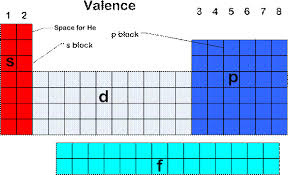7 IMPORTANT PERIODIC TRENDS
1. reactivity
2. ion charge
3. melting point
4. atomic radius
5. ionication energy
6. electronegativity
7. density*
1. Reactivity
- metals and non-metlas how different trends
- the most reactive metal is Francium ; the most reactive non-metal is Flourine
2. Ion charge
- elements ion charge depend on their group (columns)

3. Melting Point
- elements in the center of the table have the highest melting points
- noble gases have the lowest melting points
- starting from the left and moving right, melting point increases (until the middle of the table)
*carbon doesnt follow trend --- highest melting point
4. Atomic Radius
- radius decrease to the up and the right
- Helium has the smallest atomic radius
- Francium has the largest atomic radius
5. Ionization Energy
- ionizatino energy is the energy needed to completely remove an electron from an atom
- it increases going up and to right
- all noble gases have high ionization energy
- helium has the highest ionization energy
- francium has the lowest ionization energy
- opposite trend from atomic radius
6. Electronegativety
- electronegativity refers to how much atom want to gain electrons
- same trend as ionization energy
You should be a little more descriptive about your periodic trends. Stating that Fluorine is the most reactive non-metal for example doesn't explain what happens to the reactivity as you move to the right.
ReplyDelete